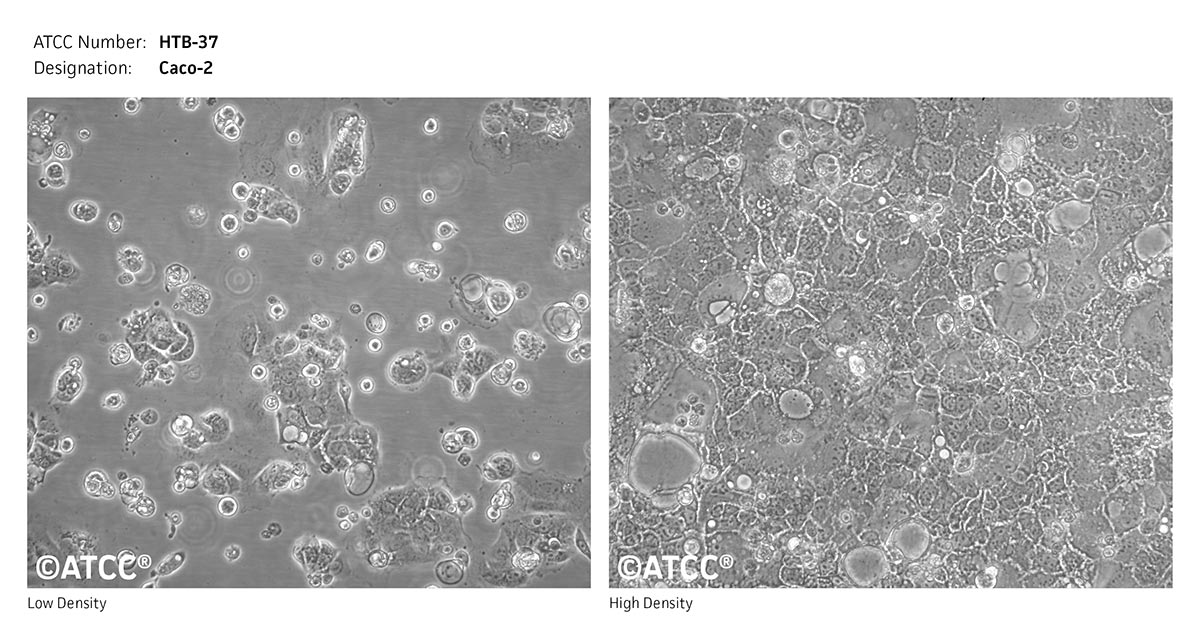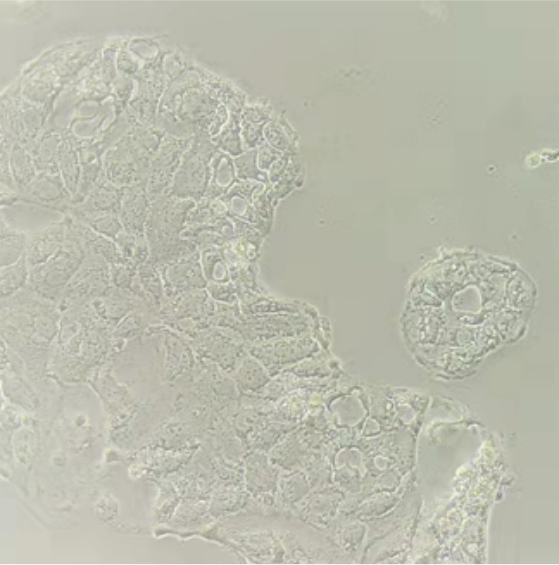- Cart 0
- English
Caco-2 Cell Culture Guide
January 08, 2025
Clicks:910
The Caco-2 cells were isolated from a primary colorectal cancer of a 72-year-old male. When confluent, they exhibit characteristic differentiation of intestinal epithelial cells. Therefore, the Caco-2 cell model has been widely used abroad for over a decade as an in vitro model for studying drug absorption in the small intestine, characterized by its simplicity, good reproducibility, and broad application range.
|
Name |
Caco-2 (Human Colorectal Adenocarcinoma Cells) |
|
Morphology |
Epithelial-like |
|
Growth Characteristics |
Adherent |
|
Cultivation Medium |
79% MEM Base Medium (abs9503) + 20% Superior Fetal Bovine Serum (abs972) + 1% Antibiotics (abs9244) |

Figure 1 Caco-2 (Human Colorectal Adenocarcinoma Cells)
The first issue we need to discuss is how to determine if the cell status is good? To intuitively understand the cell status, we can refer to Figures 2 and 3 below. Normal Caco-2 cells grow in an island pattern, with tight intercellular junctions, smooth boundaries of cell clusters, and often contain large vacuoles (which is a normal phenomenon).

Figure 2 Normal Morphology of Caco-2 Cells

Figure 3 Normal Morphology of Caco-2 Cells
The second issue we discuss is the difficulty in digesting these cells. These cells have tight intercellular connections, making them difficult to digest and dissociate, and the longer they are cultured, the tighter the connections become, making digestion even more challenging. Therefore, the following points should be noted during digestion:
1. Wash the cells with PBS (abs9459) twice before digestion;2. Control the digestion time to 5-10 minutes, and terminate the digestion when the cells can be dispersed into small cell clumps;
3. After digestion, disperse the cells into individual cells before subculturing.
Last, we discuss the issue of slow cell adhesion and proliferation. Especially immediately after resuscitation, cell adhesion is particularly slow, usually taking 2 to 3 days to adhere and spread (which may also have vacuoles); it is normal to have a few shiny cells floating or attached to the cell colonies, which will subsequently enter the colonies and grow normally; to avoid disturbing the cells during the initial attachment, it is recommended to change the medium on the third day.
Also, these cells proliferate slowly, with a doubling time of about 72 hours, and should be passaged once a week at a 1:3 ratio. Due to the high nutritional requirements of these cells, it is recommended to use 20% superior fetal bovine serum (abs972). If the cells become increasingly detached over the course of cultivation, or even float in large clumps, it is necessary to check if there are any abnormalities in the medium components and culture environment.
Note: The images are sourced from the internet and customers for reference and learning purposes only.
Absin provides antibodies, proteins, ELISA kits, cell culture, detection kits, and other research reagents. If you have any product needs, please contact us.
|
Absin Bioscience Inc. |
 Follow us on Facebook: Absin Bio Follow us on Facebook: Absin Bio |
